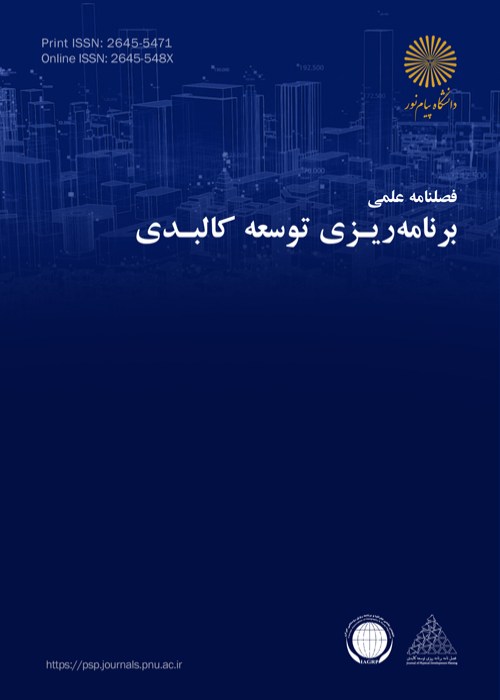Measuring the physical dimension of rural resilience against flood (Case study: Gorganroud watershed basin)
Author(s):
Article Type:
Research/Original Article (دارای رتبه معتبر)
Abstract:
Nowadays, recognizing the ways to achieve sustainability has dramatically changed through different patterns of vulnerability reduction in rural planning and disaster management. The attitude to natural hazards has also changed, and the dominant view has shifted from focusing on reducing "vulnerability" to improving "resilience". According to figures, "floods", storms and earthquakes have caused the greatest damages and casualties to human societies. Iran and Golestan province are not exceptional. Results of the present study show that 215 villages are facing the permanent danger of flood. In recent years, measures have been taken to reduce vulnerability, especially in case of physical dimensions of villages in Golestan province; however, enough attention has not yet been paid to effective attempts for measuring resilience against the flood risks. Therefore, based on systemic and sustainable development approaches the main goal of the present research is analyzing and measuring the relations between physical-environmental, economic, social, and institutional factors of rural communities with the rate of their resilience against flood in Gorganroud watershed. This research is a fundamental-applied study and has been completed based on a descriptive-analytical method. The study area contains 106 villages with 22,942 households. Using multistage and random cluster sampling and Cochran formula, 31 villages with 318 households were selected as the sample size. Validity of the questionnaire was verified using the Delphi method and the reliability of the questionnaire was confirmed by the total amount of Cronbach's alpha coefficient for the rural household questionnaire α1= 0.86 and for the rural managers (Dehyar) questionnaire α2= 0.89. The overall results of the present research showed that there is a significant relationship between the environmental-physical, and social components of the study areas and the resilience of the inhabited communities against the floods. But there is not a meaningful relationship between the economic components of these villages and the resilience of their inhabitants in dealing with floods. Meanwhile, the average resilience of various dimensions of entire sub-basins of the study area was often ranked as "moderate to weak" grouping. The average figures for resilience of various dimensions were as follows: environmental-physical 2.89, social 3.68, institutional 2.92 and economic 2.64. These figures confirm the “moderate to weak” grouping of the area against flood resilience. In conclusion, it can be said that rural households in sub-basins of ChehelChai, Ghurechai and TilAbad and Sofla of Gorganrood have an overall moderate resilience, and rural households in sub-basins of Madarsoo, Rudbar-Mohammad-Abad-Zaringol and Sarisoo locate at an overall weak resiliency group.
Keywords:
Language:
Persian
Published:
Journal of Physical Development Planning, Volume:3 Issue: 11, 2018
Pages:
111 to 133
magiran.com/p1936810
دانلود و مطالعه متن این مقاله با یکی از روشهای زیر امکان پذیر است:
اشتراک شخصی
با عضویت و پرداخت آنلاین حق اشتراک یکساله به مبلغ 1,390,000ريال میتوانید 70 عنوان مطلب دانلود کنید!
اشتراک سازمانی
به کتابخانه دانشگاه یا محل کار خود پیشنهاد کنید تا اشتراک سازمانی این پایگاه را برای دسترسی نامحدود همه کاربران به متن مطالب تهیه نمایند!
توجه!
- حق عضویت دریافتی صرف حمایت از نشریات عضو و نگهداری، تکمیل و توسعه مگیران میشود.
- پرداخت حق اشتراک و دانلود مقالات اجازه بازنشر آن در سایر رسانههای چاپی و دیجیتال را به کاربر نمیدهد.
In order to view content subscription is required
Personal subscription
Subscribe magiran.com for 70 € euros via PayPal and download 70 articles during a year.
Organization subscription
Please contact us to subscribe your university or library for unlimited access!


